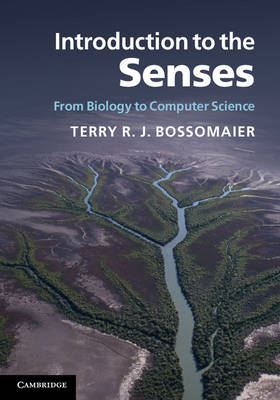
Introduction to the Senses
Cambridge University Press (Verlag)
978-0-521-81266-5 (ISBN)
An understanding of the senses - vision, hearing, touch, chemical and other non-human senses - is important not only for many fields of biology but also in applied areas such as human-computer interaction, robotics and computer games. Using information theory as a unifying framework, this is a wide-ranging survey of sensory systems, covering all known senses. The book draws on three unifying principles to examine senses: the Nyquist sampling theorem, Shannon's information theory, and the creation of different streams of information to subserve different tasks. This framework is used to discuss the fascinating role of sensory adaptation in the context of environment and lifestyle. Providing a fundamental grounding in sensory perception, the book then demonstrates how this knowledge can be applied to the design of human-computer interfaces and virtual environments. It is an ideal resource for both graduate and undergraduate students of biology, engineering (robotics) and computer science.
Terry R. J. Bossomaier is Professor in Computer Systems and Director of the Centre for Research in Complex Systems (CRiCS) at Charles Sturt University, Bathurst, Australia. He is particularly interested in sensory information in the context of vision and hearing and was involved in the creation of the first degree course in computer games in Australia in 2000.
Foreword; 1. Introduction and overview; 2. Understanding sensory systems; 3. Introduction to Fourier theory; 4. Introduction to information theory; 5. Hearing; 6. Basic strategies of vision; 7. The correspondence problem: stereoscopic vision, binaural hearing and movement; 8. The properties of surfaces: colour and texture; 9. Non-human sensory systems; 10. Sensory integration; References; Index.
| Erscheint lt. Verlag | 1.6.2012 |
|---|---|
| Zusatzinfo | 12 Tables, black and white; 8 Plates, color; 29 Halftones, unspecified; 31 Line drawings, unspecified |
| Verlagsort | Cambridge |
| Sprache | englisch |
| Maße | 180 x 254 mm |
| Gewicht | 860 g |
| Themenwelt | Informatik ► Software Entwicklung ► User Interfaces (HCI) |
| Studium ► 1. Studienabschnitt (Vorklinik) ► Physiologie | |
| Naturwissenschaften ► Biologie ► Humanbiologie | |
| Naturwissenschaften ► Biologie ► Zoologie | |
| Naturwissenschaften ► Physik / Astronomie ► Angewandte Physik | |
| ISBN-10 | 0-521-81266-6 / 0521812666 |
| ISBN-13 | 978-0-521-81266-5 / 9780521812665 |
| Zustand | Neuware |
| Haben Sie eine Frage zum Produkt? |
aus dem Bereich


